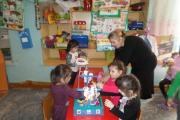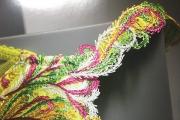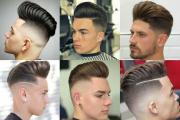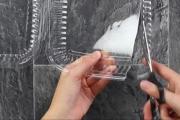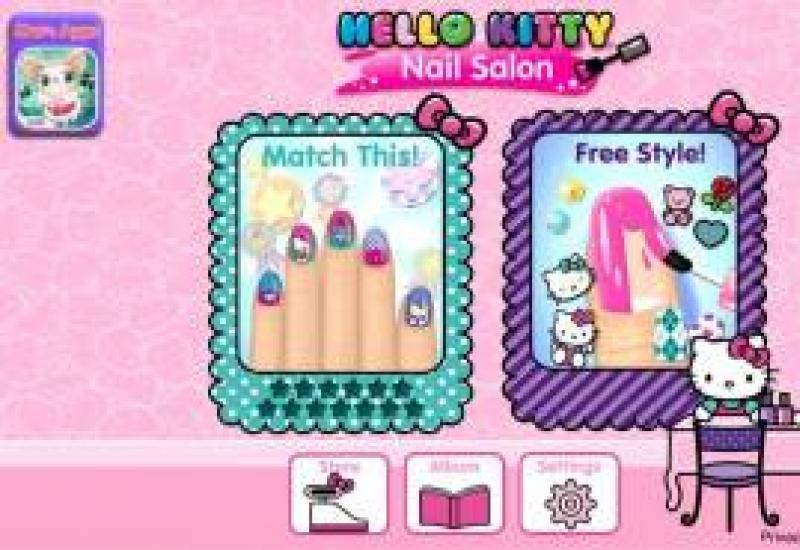Crochet for children photo and video lessons. Knitting for boys What to knit a boy crochet for 2 years
Beautiful knitted things on small children evoke affection. Tiny blouses, caps, pants cannot but delight. But for babies, knitted fabric not only fulfills an aesthetic function. It is of particular value, since newborns have not yet established an independent heat exchange - they really need additional thermal insulation and protection.
Clothes for legs
First of all, the child needs to insulate the legs. Knitted socks and booties do a great job with this. Socks for babies differ from adult models only in size, but booties are the first shoes, they are presented both in the form of shoes, boots, and are similar to sandals. Booties-shoes and boots usually have ties to hold tightly on the leg; Velcro is not recommended, otherwise it will scratch the skin. Sandals can be worn in the summer, but they act only as a decor, they will not protect from dust and drafts. In summer, socks are safer. Standard sizes of socks and booties range from 8 cm to 13 cm. The size is equal to the length of the baby's foot. Every 3 months, the leg adds 1 cm, so when calculating, you can push off from the age of the baby. The length of the foot is measured from the heel to the tip of the big toe.
Knitted hat - beautiful protection
A child under the age of one year has a soft area called the "fontanelle", and until it is overgrown, it is imperative to wear a hat that will protect and insulate the head. Such hats should be seamless and have a minimum of different fasteners - knitted hats are suitable for this role. In our catalog you will find knitting patterns to create beautiful hats of different types:
- classic hats;
- caps;
- helmet hats.
And, perhaps, knit something individual for your boy or girl. The size of the cap is determined by the girth of the head. A small baby has a girth of about 35 cm, then every 3 months it increases by an average of 4 cm and reaches 47 cm by the first year of life. The hat should be knitted so that it can stretch slightly and at the same time not slide on the child's forehead.
Knitted jumpsuits for newborns
Jumpsuit is a practical thing in a children's wardrobe, it is easy to put on. There are two main types: jumpsuit-bag and jumpsuit with panties. The first type is convenient for home use, since the lower part can be unfastened and a diaper can be quickly changed, and the second is mainly relevant for walking.
The size of the jumpsuit for newborn girls and boys is calculated based on the girth of the chest, waist, hips, as well as height. It should be borne in mind that babies grow quickly, and by the time the knitted thing is ready, it may be small.
Accessories and jewelry for babies
A one-year-old child does not need separate decorations, since knitted clothes are beautiful in themselves. Small details can be dangerous - children of this age love to taste everything. The only thing a baby can safely knit is a scarf in addition to a hat and mittens. You should not make a long scarf, it is enough to knit such a length that it is enough for one and a half turns.
If you still need to decorate the clothes, you can improvise with piping, tying things with pico or scallops, or adding lace. Such decorations are not suitable for things for boys until the first year, in this case it is better to rely on color and texture. For example, on hats for boys, patterns with braids and aranami, alternating stripes from garter and purl stitches will look great.
Choose the right yarn
The yarn should be appropriate for the season for which the item is being created. Acrylic is suitable for winter clothes - it is warm, does not prick, tolerates multiple washes. Despite its synthetic origin, it is hypoallergenic. Cashmere and angora are also good. Many manufacturers produce lines specifically for newborns - you can safely take such yarn. Wool and mohair are not suitable for baby's delicate skin, they cause unbearable itching. Summer clothes are knitted from cotton yarn, bamboo. You should not use threads with the addition of lurex, sequins and other things. The yarn must match the number of knitting needles.
The simpler the clothes, the more comfortable and safe the baby is.
Avoid buttons - the child may tear them off and swallow them. The same goes for bells, brushes and other elements. There is no need to make applications - a child under one year old spends most of the time in a supine position, bulges can interfere. In addition, overly decorated items are difficult to wash.
Pay attention to knit density and pattern
Choose simple patterns to knit the thing faster. Don't knit the garment too tightly or it will squeeze. Also, with tight knits, you run the risk of getting a smaller size.
Knit according to the current size of the crumbs
Not always tying for growth means doing better. You cannot knit larger hats - they will slip and not protect the head. In overalls, a child can drown, and babies react sharply to inconveniences. If the thing still turns out to be larger, set it aside until the crumb grows up, and tie another.
Knitted jeans
In such stylish jeans your baby will feel like a real cowboy, he certainly will not be scared by rain or cold wind!

Dimensions (edit)
0 months
Final dimensions
(before washing)
1 inch = 2.54 cm (Example: 7 inches = 7 * 2.54 = 17.78 cm)
Waist: 13 inches
Crotch length: 7 inches
Side Seam Length: 12in
Materials (edit)
Rowan Denim yarn
Nashville # 225 (dark indigo): 2 balls
Tennessee # 231 (light blue) 1 ball
A bit of Rowan Handknit Cotton yarn; color: Mango Fool # 319 (orange) for embroidery
Straight needles number 4.
Remains of yarn (cotton)
18 inches elastic band.
Stitching needle
Dark blue stitching threads
Not necessary:
A small piece of wool for a tag
A small amount of embroidery thread on the tag
Button
Knitting density
20 stitches / 28 rows = 4x4 inches (10x10cm) stocking
Attention
After knitting, denim yarn shrinks by about 5-15%, only in length, during the first wash in hot water. This reduction is taken into account. Jeans can also fade when washed and worn, and a white heel appears like denim.
Description
Right leg
Since the edges may be visible, remove the first loop as purl every row
* with CC yarn, dial 35 p.
Knit 10 rows with purl stitch, finish with ISN. Nearby; break the thread.
With MC yarn, knit 2 rows of hosiery.
The next row [PERSONS. ROW]: Remove without knitting 1 st, 1 persons, add 1 st from the broach, knit until 2 sts remain, add 1 st from the broach, 2 persons.
Knit 3 rows of hosiery,
Repeat 4 rows 7 more times. 51 p .. *
Continue with 7 '' stocking (including cuffs), finish with PZN. Nearby.
Next row [ex. ROW]: CLOSE 5 p., Wear to the end.
The next row [PERS. ROW]: Remove without knitting 1 p., 2 persons together, persons to the end.
Next row [ex. ROW]: Remove without knitting 1 p., 2 together, wear to the end.
Repeat these 2 rows again. Remaining 35 p.
** Continue to knit with stocking 10 inches, finish out. nearby.
False seam
The next row [PERSONS. ROW]: 17 persons p .; throw the next stitch off the left knitting needle and loosen to the first row .. Using the extra knitting needle, raise the dropped loops again, but instead of lifting each dropped loop individually, as if you would normally restore the dropped loops, lift 1 dropped loop, then 2 dropped loops together, repeat the sequence until all the loops have been lifted. IMPORTANT: Raise dropped stitches as if you were knitting a part of the cuff with the wrong stitch (this creates the illusion of a seam turned inside out, like on the cuff of real jeans. When you lift all the loops, return the loop to the left knitting needle and knit the faces to the conda row.
Belt.
Next row [ex. ROW]: all persons n ..
Knit 9 rows of stockings.
Repeat these 10 rows again. The first row of purl loops will be the lower edge of the belt, bend the belt along the second row of purl loops, you get a drawstring for the elastic.
Place all the loops on the thread so that the loops do not form bundles. Tie tight with a double knot and cut off ends, leaving 2 inches. **
Left leg
Knit as right from * to *.
Continue with stocking 7 inches (including cuffs), finish over faces. nearby.
Forming a bevel of a crotch seam:
Next row [ex. ROW]: CLOSE 3 p., Wear to the end.
The next row [PERSONS. ROW]: CLOSE 5 p., Persons to the end.
The next row [PERSONS. ROW]: CLOSE 3 p., Persons to the end.
Next row [ex. ROW]: 1 out, 2 together out, out to the end.
The next row [PERS. ROW]: 1 PERSON, 2 persons together, persons to the end.
Repeat these 2 rows again. 35 p.p. left.
Continue as right leg from ** to **.
p-tasha - the beauty of the needlewoman
Changed and supplemented a little)) Not ready yet, a lot of material, please wait)))
1. Mom's sun
Girls, descriptions and diagrams for the set "Mom's Sun" I do not have. knitting began with a yoke. for this I typed a chain from the VP and tied several rows round. knitted with "Check marks" - 1СН 1ВП 1СН. then she divided the knitting and knitted the front and back separately, knitting the armholes. when the yoke was ready, she began to knit a skirt down from her. I have a few photos of the drawing closer, it may come in handy:
at the end she tied the sleeves. knitted like this:
1. Tied the sleeve with the main pattern, a little more than necessary.
2. sewed it, having pinned it, into the armhole.
3. knitted the ruffle. attaching it at the beginning and at the end of the row to the armhole.
4. from the inside I knitted an elastic band.
lining is made of knitted mesh. sewed it in the studio.
what I found: 





*
2. Top "Buttons"
Yarn:
ANNA 100% cotton (100 g / 530 m), hook number 1
The size:
104 -110 cm.
Description:
Step 1. We knit a strip of CH 15 CH wide and 102 rows long.
Step 2. We close the resulting strip in a ring and knit arches of 7 VP according to scheme 1.
Step 3. We knit a drawing according to scheme 2.
Step 4. On the seamy side, with half-columns, we move to the beginning of the last row and knit 2 rows of arches from 7 VP. the points of attachment of the arches were marked with red paste. on the arches we knit a drawing according to scheme 2.
Step 5. Repeat step 4 2 more times.
Step 6. We knit the straps - width 11 CH, length 48 rows.
Step 7. We tie the armholes of the sleeves and the neck with 2 rows of RLS.
Step 8. Decorate with buttons.
Step 9. Top is ready! 


3. topic "Bead" yarn "Anna", hook number 1
Size: 104 -110 cm.
Materials: ANNA yarn 100% cotton (100 g / 530 m), hook number 1
Dial a chain from VP (74 ticks), close in a ring and tie in a circle
3 rows (scheme 1).
Divide knitting in half: 37 checkmarks in front, 37
checkboxes on the back. further back and before knitting separately.
Before (scheme 2)
Backrest (diagram 3)
Having knitted according to the scheme, we knit straps: width 4 ticks, length 17 rows.
We sew the straps. The coquette is ready. We knit an openwork pattern down from the yoke
according to scheme 4.
Having connected the drawing according to the scheme, we move with half-columns along the seamy side
to the penultimate row (a row of ticks) and knit 3 rows of ticks and again an openwork pattern
according to the scheme 4. repeat this point 1 more time.
Next, we knit 4 rows of checkmarks (we first go over the purl
side with half-columns to the penultimate row) and a drawing according to scheme 5.
on the small ruffles obtained on the top (there are 3 of them), we knit arches of 5 VP,
attaching them to the picot. on the arches we knit a drawing according to scheme 6.
Sleeve (knit 2 parts).
We collect a chain from the VP and knit 33 checkmarks on it. Further in each row
we subtract 1 tick on both sides until 11 remains in the work
checkboxes. Sewing the sleeve into the armhole. Then we knit, attaching in
at the beginning and at the end of the row, sleeve to the armhole, drawing according to scheme 7.
Having connected the pattern according to scheme 7, we knit again the pattern according to scheme 5.
a few working photos:
there is no last photo of the finished sleeve with a knitted elastic band. I am knitting from the inside out 1 row of bobbin elastic.
We tie the neck of the top according to scheme 8.
Steam the finished top and decorate if desired. 











********
4. skirt "pink cloud"
description
age 3-4 years
VITA COCO yarn 100% cotton 50gr. / 240m., hook 1.25. it took me exactly 2 skeins of yarn for a skirt.
1.we collect a chain of VP and knit according to the scheme 1 strip 18 CH wide and 80 rows long.
2.Connect the resulting strip and knit five rows of the mesh according to scheme 2.
3.Add 10 CH evenly. we make additions according to scheme 3 in each 8 CH. + 4 more rows of mesh.
4.Add 10 CH more evenly. we make additions in every 9 CH. + 4 more rows of mesh.
5.Add 10 CH more evenly. we make additions in every 10 CH. + 4 more rows of mesh
6. knit ruffle according to the scheme 4. cut off the thread.
7. attach the thread to the beginning of the first row and knit the ruffle according to the scheme 4. cut the thread.
8. attach the thread to the fifth row and knit one more ruffle according to the scheme 4. cut off the thread.
9. attach the thread to the tenth row and knit the ruffle according to the scheme 5. cut the thread.
10.attach the thread to the 18th row and knit the ruffle according to scheme 6.
11. Sew the belt at the skirt, hide all the tails. on the left side we knit 3 rows of bobbin elastic.
12.We steam the skirt and decorate with flowers.
description of the flower: we close a chain of 5 VP into a ring. 1r. knit 10 sc in the ring. 2p. we knit arches * 3 VP RLS * - 5 times. 3p. in each arch we knit a petal * 2СН 1С2Н 2СН half-column * - 5 times. sew a bead into the center of the flower.
13.we sew a petticoat
14 the skirt is ready. 







*****
5. Tunic
And I already knitted this top based on the baptismal dress from the online http://club.osinka.ru/topic-56766?start=0 for my daughter. Now I have repeated it to order.
ANNA yarn 100% cotton (100 gr. / 530 m.), Hook No. 1
In the course of work, I took several photos. I would be glad if this information is useful
The yoke consists of two parts, sewn together. Knitting began from an acute angle, gradually increasing to the desired height. I tried to draw a diagram (though by hand), that's what happened
According to this scheme, I knitted two parts, then sewed them together. In front, the triangles were overlapped. The straps did this (I apologize for the quality of the photo, I photographed it late in the evening).
1. From the top of the yoke, I gathered a chain of air loops of the required length. I fixed it on the back. Around the resulting armhole, I tied several rows in a circle with single crochet columns.
2. Tied several rows of single crochet around the neck: knitted from the beginning of one triangle to another. Then in the opposite direction.
3. Tied at the neck with an openwork pattern according to this pattern
Everything 









******
6.panama hat
white yarn MAXI 100% cotton (100 gr. / 565 m.), green VANESSA FILATTI GOLD 100% cotton (50 gr. / 300 m.) hook No. 1 

******************************************
7. I will marry like that!
For this blouse, I only have this:
Getting started: dial a chain from the VP of the required length, close it in a ring and tie several rows in a circular checkmark pattern (1 CH 1 VP 1CH). We divide the knitting in half and then knit the front and back separately. You can focus on these schemes:
Front. Scheme 1
Back. scheme2
Having knitted according to the scheme, we knit the straps of the required length.
We sew the straps. The coquette is ready. Down from the coquette we knit alternating rows of sirloin mesh (1 CH 2 VP 1CH) and an openwork pattern: 1 row: arches
from 6 VP. 2nd row: in each arch 2 CH 3 VP 2 CH. 3rd row: arches of 6 VP. At the end, on the rows of the sirloin mesh, we knit a ruffle: 1 row: arches of 6 VP. 2 row: in each arch we knit 7 CH. 3rd row: 5 CH through 1 VP. 4th row: * 1 RLS 3 VP *.
We knit the sleeve from the armhole, attaching it to it at the beginning and at the end of the row. When the armhole is full, knit a few more rows in a circular and ruffle pattern as described above. From the seamy side, knit 1 row of bobbin elastic.
We tie the neck (1 row: arches of 5 VP. 2 row: in each arch we knit * 1 RLS 3 VP * - 3 times).
We steam the blouse and decorate. 


*********************
8. Panama 2
the beginning of the panama, scheme 1, fields from the second scheme 


There is no description for the hat. began to knit her according to this pattern. I changed the scheme a little, adjusting it to the desired size
the fields are linked by this. in the fields, in the last row, regilin is tied. 

*************************
9. Beanie 

********************************
10.bandages
description
dial 5 VP + 3 VP for lifting. we knit according to the scheme 1 strip, longer than the circumference of the child's head
the resulting strip is closed in a ring, sewn. on both sides we lay an elastic band, tying it with one row of sc. we knit according to the scheme of 2 ruches
the bandage is ready. it remains only to decorate it. 


Another bandage
yarn Yarnart VIOLET (100% cotton, 50 g / 282 m.), hook No. 1
this time I knitted the band like this: I folded the rubber band (I am knitting the spandex elastic band) in half, tied the ends and tied the resulting ring with 2 rows of RLS and ruffles according to the scheme
repeated the same rows on the other side. she decorated the finished bandage with roses.
knitted roses according to this pattern. for large flowers I typed 30 VP, for small 15 VP 
*******************************
11. Sundress, there is a description in my sun and in a bead


*********************************
12. Dress
Girls, thank you very much for the reviews and for the leaves !!! The dress was knitted without a description. Knitted and bandaged it several times.
I took a few more photos of the dress
And I tried to describe it a little. I started with a strip of motives. Here is his diagram 1
I knitted each motif separately, connecting them in the process. Then she knitted the top of the dress. To do this, I knitted a row of arches of 5 air loops, and then knitted with the main pattern, knitting the armholes and the neckline. Scheme of the main figure Scheme 2
The sleeve did this: I tied 1 motive and attached it to the armhole. The space between the armhole and the motif was filled with arches of 5 air loops. Then 3 rows of sc and ruffle. The skirt was knitted with the main pattern, then so scheme 3
In the scheme I drew only one row of RLS, I knitted them 3. Then I made a small ruffle in this place. I finished a sundress with 2 ruffles, I drew 1 in the diagram. If you have any questions, ask. I try to help.
And I knit headbands without a description. But the principle is this: first I knit a strip of CH, a little longer than the circumference of the head. I close it. I knit ruffles on both sides. At the end I insert a rubber band. 



I will find and add the rest
*******************************
13. Bandage Snowflake 



*********************************
14. Sundress
My new sundress
100% cotton yarn PELICAN (50 g / 330 m), hook number 1
I took only the first rows in it and repeated them with a gradual expansion.
and a few photos of the details of the sundress. in the last photo - the wrong side. 



***********************************
15.Yarn SOSO 100% cotton (50 gr. / 240 m.), Hook No. 1.25 

Scarf
yarn YARNART MERINO DE LUXE (50% wool, 50% acrylic)
*****************************************
16. Cotton bolero
MAXI yarn 100% cotton (100 gr. / 565 m.), hook No. 1
Bolero knitted without description. I did not make a pattern, I just applied it to a blouse of a suitable size during work. First, I knitted with the main pattern (slingshots from CH 1 VP CH) at the same time the back and both shelves. Having connected several rows (rows 2-3), I began to knit the armholes of the sleeves. I knitted the neckline from the first row of work, cutting one slingshot on each side for this. Then she began to knit the sleeve: first, several rows with the main pattern exactly (2-3 rows), then she reduced it. Sewn in the sleeve. Having done this part of the work, then I simply tied the bolero with openwork patterns to the desired size. On the sleeves I used this pattern from Schatz
Front bolero fastens with buttons (hidden under the flower) 



bolero coquette scheme 
***********************************
17. Top "Colors of Summer" 


**********************************
18. Sundress 


*************************************
19. Top
MAXI yarn 100% cotton, hook No. 1 




****************************************
20. Dress 


***********************************
21. Skirt. planned as a beach. but, in my opinion, it looks interesting with jeans
Yarn MAXI 100% cotton (100 g / 565 m), hook 1. I took this pattern as a basis: 


**************************************
22. flower. MK
Step 1. We collect a chain of 5 VPs and close them in a ring
Step 2.1 VP for lifting + 9 RLS.
Step 3. Knit 5 arches from 3 VP
Step 4. In each arch we knit a petal * 2СН 1С2Н 2СН half-column * - 5 times
Step 5. We tie each petal with one more row: * 1СН 2СН 3С2Н 2СН 1СН half-column * - 5 times
Step 6. We tie each petal with 3 VP arches. * There are 8 arches on one leaf, half-column at the end of the petal * - 5 times.
Step 7. Turn the flower over. With half-columns on the seamy side, we get to the first row and knit arches of 5 VP on it (5 arches in total)
Step 8. In each arch we knit a petal: * 3СН 1С2Н 3СН half-column * - 5 times
Step 9. We tie each petal with one more row: * 1СН 1СН 2СН 3С2Н 2СН 1СН 1СН half-column * - 5 times
Step 10. We tie each petal with 3 VP arches. * There are 10 arches on one leaf. At the end of the petal, half-column * - 5 times.
The flower is ready. It remains to tie a bead and sew it to the center of the flower
Ready 



***********************************
23. "Assorted Fruit" hat
yarn BEGONIA (YarnArt) 100% cotton, hook number 2.
I took this scheme as a basis for the hat
the hat was decorated with flowers (12 VP close in a ring. knit in a ring * 5 VP 3S4N 5VP SBN * - repeat 5 times. tie the petals with SBN), beads, decorative buttons, satin ribbon. 

************************************
24. Skirt
I really love these flowers both in life and in knitting. Very light and beautiful.
yarn - YarnArt Begonia 169m / 50g;
hook - No. 2.5.
The size of the rose directly depends on the selected yarn, crochet hook and the initially set amount of bp. in a chain. I never get their eyes on them, because I often bandage the same hats and "a little more - a little less" does not suit me. But the first time, of course, you need to go through the experience.
We take this schematic as a basis.
We collect a chain of 69 vp.
1r. - knit CH in the 5th loop of the chain. Then through one loop into the next ch. we tie chains 2 CH, separated by 1 vp. We knit thus. to the end of the row.
2p. - we knit 3 VP lifting and turning work. In the first arch we knit another 1 CH, 3 vp. and 2 CH. Further to the end of the row, we knit 2CH, 3 vp, 2 CH in each arch.
3p. - we knit 9 CH in each arch of the previous row. We start the first petal from 3 vp. We roll up the rosette with a roll, well, that's all. It takes a long time to knit the 3rd row, but it's worth it. 
*******************************
28. Shrug
For length - one sleeve length + back width + second sleeve length. You can take it off any clothes or ask the kid to spread his arms to the sides and quickly measure it. The length of the frill must be subtracted from the result obtained. It is possible (and desirable) to knit one ruffle report in width and height. And you can estimate by eye, I think 10 cm.
For the width - since the width remains unchanged along the entire length of the shrug (i.e. our pattern is a rectangle), then for the width, measure along the back from the neck and not reaching the waist ... Hmmm, it's hard to explain (((. So I took a magazine, found a bolero pattern for a girl of 6. The width of the sleeve at the bottom (I liked the sleeve - it is straight, without extensions, as we need) 18 cm. For my 7 years old I added 2 cm = 20 cm. The width of the frill will come out 4-5 cm. So on the back, the length of the shrug will be 20 + 5 = 25 cm (the upper frill will lie on the neck). Looking at the measurements of the children in the magazine - The length of the back to the waist (for my age) is 29 cm. Judging according to the photo of Natasha's shrug, it does not reach the waist. And my measurement is 25 cm less than 29 calculated from the magazine. So, I took the width correctly. 



Crocheted clothes on small children look very beautiful and original. And if you still do not know how to create stylish products, knitted without needles, sit down more comfortably, as we have prepared a large number of interesting and useful lessons for you.
You need to arm yourself with crochet, thread and patience.
Patterns and description: crochet (knitting for children)
To begin with, I propose to pay attention to the simplest models that will help you master the basics. After that, you can move on to more complex options that you can master, remembering the basic knowledge and advice of experienced masters.
The simplest is models for beginners
for baby

Popular articles:
Required: yarn, hook 1.25.
Work begins with knitting the sole.

We begin to decrease the loops on the toe part. I left 28 loops on each side, knitting a toe on the rest. We do it as follows: as in my case, 28 sc, 15 sc with a common top, 28 sc. Track. row. - RLS.
Track. row - 28 PRS, VP, 10 PRS with a common top, VP, 28 PRS. Track. row. - 29 SBN, VP, 5 PRS with a common top, VP, 29 SBN. Track. row. - RLS by the number of columns - approximate calculations.
We knit the tongue and sidewalls of the booties with single crochet, tie the top with a "crustacean step" with a contrasting thread.
Hats-caps

This product is knitted according to this pattern.

Fashion sweaters and blouses

The blouse is knitted for a one-year-old child.
You will need: 100 g of yarn (microfiber, 152 meters in 50 g), hook number 3, 6 flowers made of satin ribbons.
Work description
Start working with an openwork border. Cast on a chain of 113 air loops (VP) and knit according to pattern No. 1 7 tiers of shells = 21 rows from the typesetting edge. Next, continue knitting in a circle, tie the typesetting edge with one row with a single crochet (RLS), then divide the finished fabric into 2 equal parts, back and front. And divide the front part in half again and knit all the parts separately.
Upper back
Knit with a pattern according to the scheme number 2. After 11 rows, close the middle 33 loops and continue to knit both sides separately, knitting 2 more rows to finish knitting.
Upper part of the shelf
Knit 11 rows straight, then close 16 loops to cut the neckline from the inside, knit 2 more rows, and finish knitting. Tie the second shelf symmetrically.
Sleeves
Also, start the work with the border, for this, dial a chain of 76 VP, and tie 3 tiers of shells = 9 rows from the dial-up row. Next, knit in a circle, according to pattern No. 2, for this, tie the typesetting row with 1 row of RLS and 12 rows according to pattern No. 2.
Assembly
Sew shoulder seams, sew on sleeves. Tie the neckline and shelves with 1 next to RLS, and 1 row: 3 RLS, 1 picot. Twist 6 flagella 12 cm each, 3 on each side, and decorate the places where the flagella are attached to the shelves with flowers made of satin ribbons.
Scheme

Knitting baby socks
These socks are knitted of thick yarn, so they look more like booties and are ideal for the cold season.

The product has a foot length of 9.5 cm. For work, we used a half-woolen yarn of yellow color and red 100% acrylic, hook 2.5 and 1.25. White sewing thread with a needle.
Knit foot according to the scheme:

Mysik: 1st row: folding the booties in half in half, counting 14 loops in both directions (28 loops total per toe). We mark the beginning and end of the row with a marker or other thread. We knit from the rise the beginning of the row with a regular column to the toe. From the marker, we begin to knit a toe that connects two loops of the previous row with a double crochet. In total, we get 14 connecting double crochets. Next, we knit to the end of the row with a regular column.
2nd row: we start RLS, and on the toe we repeat as in the first row of CCHs, 2 loops in one vertex (total 7) and until the end of the RLS row.
3rd row: RLS start, on the toe we do 2 to one vertex of the CCH, then CCH 3 to one vertex and again CCH 2 to one vertex (in total we got 3 vertices on the toe). We knit to the end of the RLS row.
4th row - the row of transition to the rise. We knit it RLS. Next, we knit the booties top of 4 rows of curved CCH (elastic band). From red yarn crochet 1.25 we knit arbitrarily 2 hearts, embroider the inscription on them and sew to the booties.
Crochet for, children: video for beginners with a detailed description of the process
Today you can watch lessons on YouTube for free and learn to knit products of any complexity. I propose to take this opportunity and start creating more complex models for babies.
Creation of a vest - continuous knitting
Knitting dresses for girls
A pretty dress taken from mammy's canal
Sundresses for little women of fashion
Knitted children's blouse sleeveless embellished with flowers with voluminous petals on the yoke. The blouse is crocheted, you can wear it with a dress or trousers.
The description of knitting a blouse is presented for a girl for 5 years.
You will need: yarn "Iris" (100% mercerized cotton, 125 m / 25 g) -150 g green; hook number 1.5; 4 buttons in the form of berries.
 Connected crochet jumpsuit looks pretty for a little boy thanks to the interesting embossed "spikelets" pattern. In a set for a jumpsuit to match, tie crochet warm booties for the baby.
Connected crochet jumpsuit looks pretty for a little boy thanks to the interesting embossed "spikelets" pattern. In a set for a jumpsuit to match, tie crochet warm booties for the baby.
SIZES: 62-68 (80-86)
Differing data for the larger size is shown in parentheses.
YOU WILL NEED: yarn (55% wool, 33% acrylic, 12% Kashmir wool: 125 m / 50 g) - 300 (350) g gray and 200 (250) g blue: hook No. 4.5: 5 buttons.
 Colored hat for girls crocheted. For knitting a children's hat, a detailed description is provided, which indicates the sequence of knitting and the place where the thread color changes.
Colored hat for girls crocheted. For knitting a children's hat, a detailed description is provided, which indicates the sequence of knitting and the place where the thread color changes.
You will need: 50 g each white (color 466). blue (color 861) and burgundy (color 864) Mondial Cotton Extra yarn (60% cotton, 40% acrylic, 180 m / 50 g): hook number 3.5.
 Panama hat for girls tied crochet and is decorated with a large flower - chamomile. In this beautiful summer hat, your child will be happy to walk in sunny weather. You can knit a panama hat according to the master class.
Panama hat for girls tied crochet and is decorated with a large flower - chamomile. In this beautiful summer hat, your child will be happy to walk in sunny weather. You can knit a panama hat according to the master class.
To knit a panama, you need about 50 grams. white yarn, some green threads, yellow beads or sequins, hook number 2-2.5.
 Children's blouse crocheted colored wavy pattern. To decorate the blouse, tie the circles and sew them on the front along the neckline.
Children's blouse crocheted colored wavy pattern. To decorate the blouse, tie the circles and sew them on the front along the neckline.
SIZES: 92/98 (104/110) 116/122
If there is only one number, it applies to all sizes.
You will need: yarn (100% cotton; 135 m / 50 g) -150 (150) 200 g salmon, 50 (50) 100 g each white, red and color. fuchsia; hook number 3-4.
 Knitting of children's blouses according to this description, you can perform using different colors of yarn, the brighter the children's thing, the more interesting the child. The blouse is crocheted from the neck down with raglan sleeves. The description of knitting a children's blouse is presented for a child aged 1-1.5 years.
Knitting of children's blouses according to this description, you can perform using different colors of yarn, the brighter the children's thing, the more interesting the child. The blouse is crocheted from the neck down with raglan sleeves. The description of knitting a children's blouse is presented for a child aged 1-1.5 years.
To knit a blouse, take three colors of children's acrylic and hook number 3.
 Smart dress for a girl of two years Knitted from bright fuchsia yarn, this shade is the most fashionable girly color. The knitted dress is decorated with lush ruffles at the top and bottom of the dress.
Smart dress for a girl of two years Knitted from bright fuchsia yarn, this shade is the most fashionable girly color. The knitted dress is decorated with lush ruffles at the top and bottom of the dress.
Size 2 years
You will need: 250 g of bright pink (color 162) Mondial Cucciolo yarn (100% merino wool, 140 m / 50 g); knitting needles number 4; 3
buttons.
 A knitted baby coat decorated with a braid pattern and fluffy folds will be comfortable and warm for a child. To complement the coat, crochet the hat with a simple openwork pattern.
A knitted baby coat decorated with a braid pattern and fluffy folds will be comfortable and warm for a child. To complement the coat, crochet the hat with a simple openwork pattern.
Size: for 4 years.
Materials: 300 g of blue yarn (100% wool, 300 m / 100 g), 100 g of lilac yarn (70% cotton, 30% viscose), green yarn remnants, knitting needles # 4, hook # 3, spare knitting needles or pins, buttons - 9 pcs.





